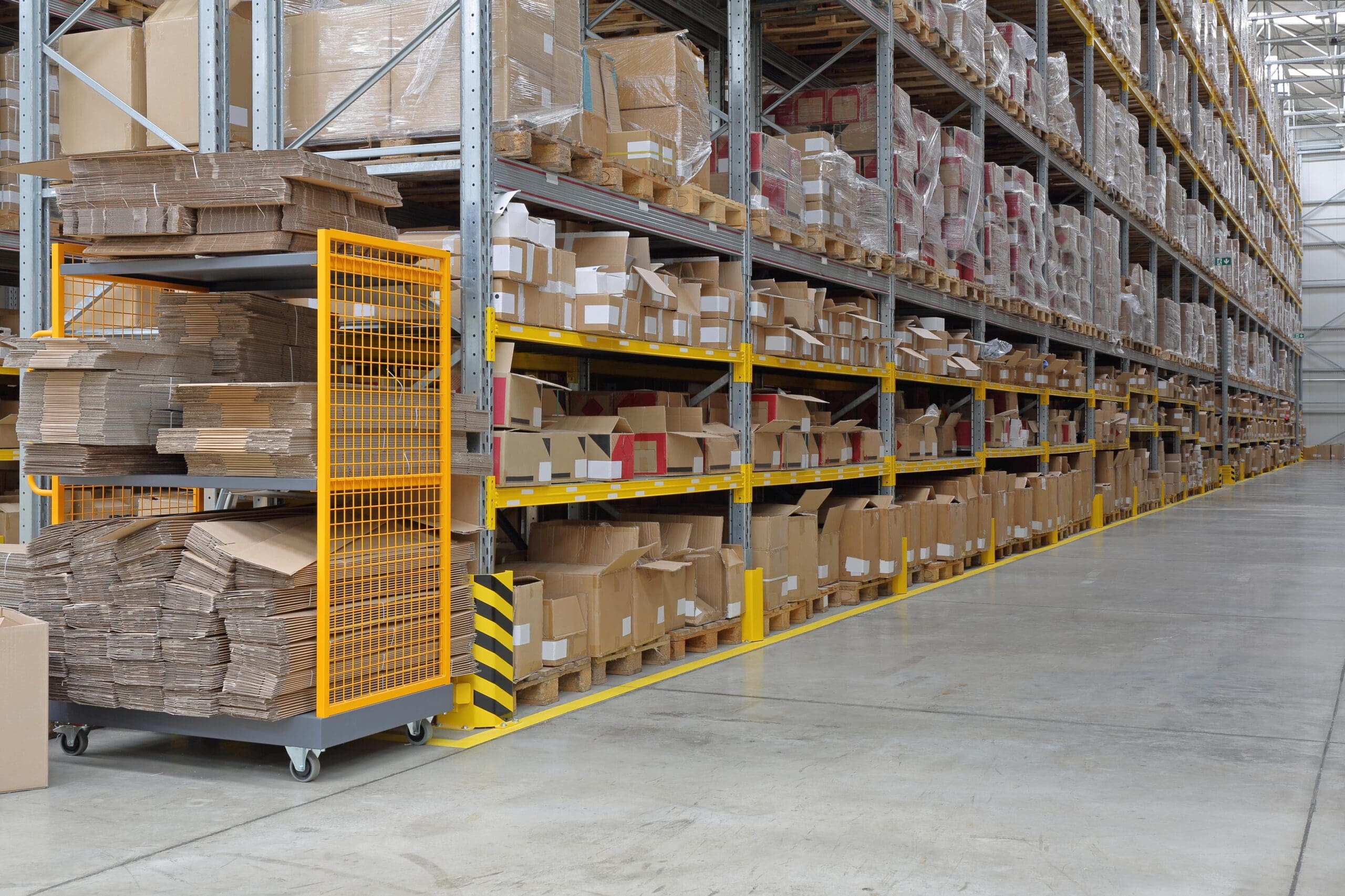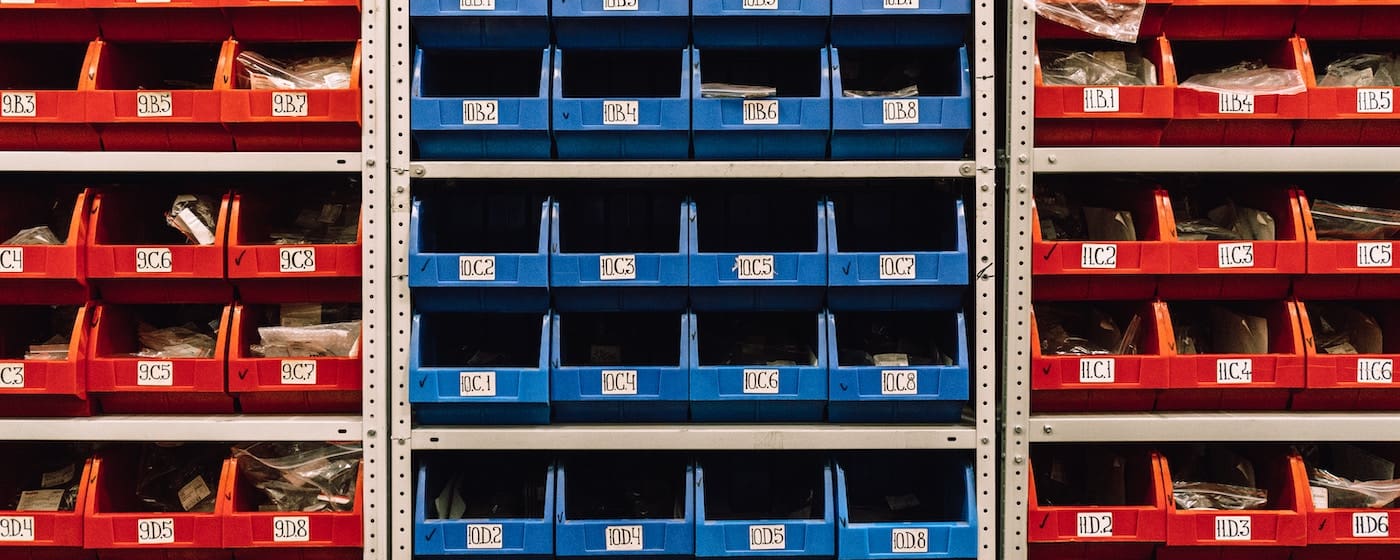Table of Contents
** Minutes
Common inventory types and their importance
Ecommerce-specific inventory models
Managing many different types of inventory is tricky
The role of third-party logistics providers in inventory management
Inventory is an important asset. But it can also easily turn into a liability.
And since ecommerce businesses deal with different types of inventory on a daily basis, it’s important that you understand all of them well.
Efficiently managing various inventory types is also crucial for ecommerce success, as it directly impacts order fulfillment, customer satisfaction, and overall operational efficiency.
In this article, we demystify the main types of inventory, as well as ecommerce-specific inventory.
Common inventory types and their importance
The different types of inventory include raw materials, work in progress (WIP), merchandise and supplies, and finished goods.
These inventory types help retailers get a better handle on inventory management.
To manage these different inventory types, you have different inventory systems such as manual, periodic, and perpetual.
Raw materials
Raw materials refer to the SKUs that are processed in a manufacturing or assembly line to produce finished goods. You need to keep optimal stock of the raw materials inventory to ensure that production happens without any hitches.
For example, silicon is a raw material when considered for making computer chips.
Work-in-progress
Partly finished materials within any production round are known as work-in-progress inventory. This type of inventory refers to the goods that are in the in-between manufacturing stage or production process. They are not raw materials anymore but are not yet finished goods.
For example, a partly assembled computer is a WIP inventory SKU in the PC manufacturing process.
Finished goods
Finished goods are final products that are ready for retailers to sell to customers. An example of this type of inventory is a completely assembled computer or any other goods available for sale in-store.
Note: In the inventory vs. stock discussion, inventory includes finished goods, as well as raw materials, and work-in-process (WIP) inventory. Whereas, stock includes only the finished products that are ready to be sold to the end user.
MRO inventory
MRO inventory refers to the inventory of supplies, spare parts, and other materials required for businesses to maintain in case of maintenance, repair, and operations (MRO). Examples of MRO inventory or MRO goods include office supplies, packing material, cleaning supplies, repair tools, and safety equipment.
Ecommerce-specific inventory models
In this section, we discuss two popular supply inventory models used by online retailers and the implications they have on inventory management. Both models, when run optimally, lead to better management of storage costs and inventory costs. This, in turn, improves the balance sheets.
Dropshipping inventory
The stock that is handled by the manufacturer (or a wholesaler), and not the merchant, is called dropshipping inventory. With dropshipping, the stock is shipped to the end customer directly from the manufacturer’s warehouse to the buyer. For this inventory type, the merchant does not physically store or handle products.
Consignment inventory
When the suppliers, and not the sellers, own and manage the shipping of goods inventory, it’s called consignment inventory. Here, the sellers assume full responsibility for the stock that sells and for any selling expenses.
Managing many different types of inventory is tricky
Various inventory-led issues can arise, specifically in the context of ecommerce. They include erratic customer demand, unmanageable order volumes, issues in the global supply chain, and SKU proliferation.
High order volumes
There are various reasons for spikes in order volumes. If your business isn’t prepared to handle the ebbs and flows, you are likely to struggle significantly with order fulfillment. To manage such high inventory turnover situations better, you may need to consider decoupling inventory.
Fluctuations in demand
It’s difficult for brands to tell what to expect in terms of product demand, as customers have so many options to choose from. Demand volatility can lead to out-of-stock situations or excess inventory.
Global supply chain complexities
Supply chain management is non-negotiable when it comes to inventory sourcing or sales. Changing customer expectations and rising network, process, product, and supplier complexity can cause supply chain bottlenecks.
Events like labor shortages, carrier disruptions, and global crises can lead to delays and extra costs. This calls for great inventory control and maintenance of safety stock.
SKU proliferation and diversification
To always keep customers delighted, retailers stock-up on multiple products, more units, and more variants. This form of SKU proliferation can increase sales but if not strategically managed it can lead to reduced inventory visibility and increased carrying costs.
The role of third-party logistics providers in inventory management
As a tech-enabled 3PL, ShipBob’s order fulfillment solution comes with an inventory management functionality. This is useful to improve the bottom line of ecommerce and manufacturing companies.
You can gain access to reports and insights that help improve inventory management across multiple stores and ShipBob’s fulfillment centers. Here are some ways in which an inventory management system like ShipBob can help with inventory management:
Sync data from your store
ShipBob is able to seamlessly link to your ecommerce platforms and marketplaces to offer a cohesive view of all orders, inventory, fulfillment center data, sales channels, and customers in one place.
Anytime new SKUs are added or you restock existing ones, it populates in the ShipBob dashboard, which helps maintain optimal inventory levels.
Count inventory in real-time
Once your SKUs reach ShipBob’s fulfillment centers, we offer you a real-time and 360-degree view of units on hand and units sold per day. Plus, all historical inventory data is stored and analyzed to predict demand and supply patterns at each distribution center.
Proactively reorder inventory
Using historical data, ShipBob helps you predict when a certain amount of inventory needs to be reordered to prevent stockouts and backorders. We even allow you to set reorder notifications the moment the inventory falls below a particular level so you can replenish stock at the right time.
Store inventory in strategic locations
Store your inventory at one of our multiple fulfillment centers, across the globe, based on your customers’ shipping destinations. This makes it easier to efficiently reach customers who buy from you.
How ShipBob helped Dossier manage various types of inventory
Perfumes are known to be difficult to transport and handle. So, the luxury perfume brand Dossier was very particular about the kind of support it expected from a potential long-term partner for its perfume and fragrance fulfillment.
Dossier ultimately chose ShipBob, and we helped ship 100,000+ orders shipped in 2020 alone.
The company was impressed by our inventory management software for its simple pricing structure, competitive pricing, and excellent services.
“We have a Shopify store but do not use Shopify to track inventory. In terms of tracking inventory, we use ShipBob for everything — to be able to track each bottle of perfume, what we have left, and what we’ve shipped, while getting a lot more information on each order.”
Ines Guien, Vice President of Operations at Dossier
Read more of the Dossier case study here.
Get started with ShipBob
If you’re interested in utilizing ShipBob’s fulfillment platform, connect with our team to learn more and get started.
Inventory types FAQs
Below are answers to the most common questions about inventory types.
How do third-party logistics providers handle inventory for multiple ecommerce stores?
Large and small businesses alike benefit from 3PL providers like ShipBob. Especially if you are an omnichannel business, instead of manually maintaining an inventory sheet for each ecommerce store, ShipBob offers a single source of truth (updated in real-time).
This also means you can do away with tedious integrations with multiple ERP platforms. Additionally, we analyze the historical data to extract insights that help improve inventory management.
What are the different types of inventory in an ecommerce business?
Finished goods are the main type of inventory in the ecommerce business. If you manage these stock levels carefully, you can save overhead costs, improve cash flow, reduce spoilage, and improve business valuation.
How can ShipBob help with inventory management?
ShipBob can help with inventory management by syncing data from your store, counting inventory in real-time, proactively reordering inventory, and storing inventory in strategic locations to improve fulfillment efficiency.



